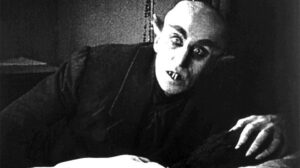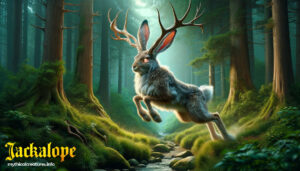Table of Contents
In the enchanting world of French folklore, the Lutin stands as a captivating and mysterious creature that has both intrigued and perplexed generations of storytellers and myth enthusiasts. These elusive beings, often referred to as “sprites” or “impish spirits,” have their roots deeply embedded in the rich tapestry of European mythology.
Origins
The Lutin finds its origins in the heart of French folklore, where it has been a recurring presence for centuries. The term “Lutin” itself is derived from the French word for “imp” or “goblin,” underscoring their impish nature. These beings are said to inhabit the rural regions of France, particularly the dense forests, dark caves, and remote villages. Lutins are part of a larger family of creatures known as “les petits esprits,” which includes other mischievous spirits like Gnomes and Brownies.
Family
In the intricate world of mythical creatures, the Lutin is not alone in its antics. These impish spirits are often depicted as being closely related to other supernatural beings such as Goblins, Elves, and Fairies. They share a common ancestry with these creatures and are often considered distant cousins in the realm of folklore.
Appearance
Lutins are notorious for their ability to shapeshift, which makes pinning down their true appearance a daunting task. However, they are typically described as small, humanoid beings, standing no taller than a child. Their stature and physical features can vary, but they are commonly portrayed as having pointed ears, sharp features, and twinkling eyes that hint at their mischievous nature.
One defining characteristic of Lutins is their distinctive attire. Moreover, they are often seen wearing traditional, rustic clothing, with earthy tones and natural materials. Additionally, this attire reflects their close connection to the natural world and their preference for secluded, rural environments.
Abilities

Lutins are renowned for their supernatural abilities, which they use to both amuse and bewilder humans. These abilities include:
Shapeshifting: Lutins can transform into various creatures and objects, enabling them to go unnoticed or play tricks on unsuspecting individuals. This skill is central to their reputation for mischief.
Invisibility: Lutins possess the power to become invisible at will, allowing them to move about undetected and carry out their pranks without being seen.
Illusions: They excel in creating intricate illusions that can deceive the human senses, leading people into strange and bewildering situations.
Teleportation: Lutins are known to traverse vast distances in the blink of an eye, making it nearly impossible to catch them in the act.
Mimicry: They can mimic the voices of humans and animals, further adding to their mystique and making them difficult to identify.
Weather Manipulation: In some legends, Lutins are credited with the ability to control the weather, particularly rain and thunderstorms. This power emphasizes their connection to the natural world.
Symbols
Lutins, being creatures of nature and whimsy, are often associated with symbols that reflect their essence. Some common symbols that represent Lutins in French folklore include:
Mushrooms: Lutins are often said to reside beneath mushrooms, especially the iconic red-capped toadstools. These fungi are seen as portals to the hidden realms of Lutins.
Acorns: Lutins are closely tied to oak trees, and acorns symbolize their affinity for the forest. These nuts are believed to be offerings that appease Lutins and prevent their mischief.
Twinkling Stars: Lutins are said to frolic under the stars, and starlight is considered their guiding light. The twinkle in their eyes is often likened to the shimmering stars above.
Worn Paths: In rural areas, paths that appear well-trodden but lead to nowhere are thought to be the handiwork of Lutins, who enjoy confusing travelers.
Myths and Stories

The Lutin’s mystique is further enriched by a treasure trove of myths and stories that have been passed down through generations. These tales capture the essence of Lutins and their interactions with the human world. Here are some of the most captivating stories:
The Stolen Keys
In a well-known legend, a mischievous Lutin played a trick by hiding a farmer’s keys. When the farmer discovered his missing keys, he was baffled and frustrated. As he searched high and low, he couldn’t help but suspect that one of the elusive Lutins was behind this misfortune.
Intrigued by the mystery, the farmer decided to investigate further. He followed a faint trail leading him to an ancient oak tree deep within the forest. There, he discovered a small hollow in the tree’s trunk. To his amazement, the keys were tucked snugly inside the hollow.
Realizing that the Lutin was responsible for this playful prank, the farmer decided to take a more conciliatory approach. Consequently, he gathered a handful of acorns and carefully placed them by the oak tree, a gesture of goodwill towards the impish spirit.
Pleased by the farmer’s offering, the Lutin couldn’t resist the farmer’s display of kindness. Consequently, with a mischievous grin, the Lutin reappeared and returned the keys to their rightful owner. This heartwarming encounter served as a valuable lesson that day – illustrating that even in the realm of mythical creatures, a bit of kindness and understanding could bridge the gap between humans and the enchanting world of Lutins.
The Lost Child
In an enchanting tale, a young child mysteriously vanishes in the depths of a dense forest. Days later, to everyone’s astonishment, the child reappears, sharing an extraordinary story of their time spent with the Lutins.
The child vividly describes the Lutins as small, friendly beings with twinkling eyes, who welcomed them into their hidden world. Consequently, these impish spirits led the child on whimsical adventures through the enchanted forest. Together, they danced under the moonlight, listened to the melodic tunes of woodland creatures, and shared laughter that echoed through the trees.
Moreover, the Lutins’ playful antics and their deep connection to the natural world left an indelible mark on the child’s memory. They spoke of the Lutins’ extraordinary powers to shapeshift, create illusions, and even communicate with animals, all of which added to the enchantment of their adventures.
As the days passed, the Lutins sensed the child’s longing for home and decided to guide them back safely. With their guidance, the child returned to their anxious family, who had feared the worst during their absence.
This tale serves as a testament to the enduring fascination with Lutins, showing that in the realm of folklore, even mysterious disappearances can lead to the most magical of encounters.
The Lutin’s Lullaby

In the realm of folklore, Lutins are renowned as skilled musicians who frequently grace moonlit nights with their tiny instruments. These impish spirits play enchanting melodies that have the power to soothe and captivate the human heart.
Under the silver glow of the moon, Lutins gather in secluded glades and hidden clearings, bringing their magical music to life. Their instruments, although small in size, produce melodies of unmatched beauty and serenity.
It is said that when these lullabies of the Lutins drift through the night air, they bestow a gift upon those who hear them. Listeners are lulled into a tranquil slumber, their dreams filled with enchanting visions of the forest and its mystical inhabitants.
These lullabies carry with them an undeniable sense of peace and wonder, a testament to the profound connection between Lutins and the natural world. In the embrace of their harmonious tunes, both the young and the old find respite from the cares of the waking world, carried away on the wings of sweet and gentle dreams.
The Haunted Cottage
Rural French folklore is replete with tales of Lutin-inhabited cottages. These narratives paint a vivid picture of Lutins as peculiar housemates who, despite their mischievous tendencies, can be surprisingly helpful when accorded respect and kindness.
In these enchanting stories, Lutins are often discovered dwelling in quaint country cottages, hidden away from the prying eyes of humans. Initially, their presence may cause mild disturbances, such as rearranged furniture or mysteriously misplaced items. Yet, as the relationship between the human occupants and the Lutins deepens, a unique bond forms.
Lutins are believed to be guardians of these rural abodes, diligently ensuring the welfare of the household and the animals on the property. Consequently, in return for their benevolent care, Lutins greatly appreciate gestures of goodwill, like leaving out offerings of fresh milk or small treats.
Furthermore, these tales serve as a testament to the delicate balance between the human world and the mystical realm of Lutins, revealing that harmony can be achieved through understanding and kindness, even with beings as capricious as these woodland spirits.
The Lutin’s Revenge
Lutins are not to be trifled with, as they are known to exact revenge on those who offend them. One story tells of a farmer who built a fence that encroached on a Lutin’s territory. In retaliation, the Lutin tormented the farmer with incessant pranks until the fence was dismantled.
The Lutin’s Warning
In certain legends, Lutins are seen as protectors of the forest and its creatures. They are known to appear to travelers and issue warnings about impending dangers or direct them to safe paths.
Similarities
Elves, described as small, ethereal beings with a connection to nature in some folklore traditions, share similarities with Lutins. Like Lutins, Elves have an affinity for forests and the ability to interact with the natural world.
Brownies, household spirits in Scottish and English folklore, are known for their helpfulness, similar to Lutins when treated kindly. Both creatures can become mischievous if not appeased.
Hobgoblins, often perceived as larger, more imposing relatives of goblins. They share a love for pranks and tricks akin to Lutins’ mischievous antics.
Sprites and Fairies, ethereal beings that often dwell in the natural world, hidden from human sight. Both share Lutins’ association with nature and the ability to perform magical feats.
Nisse/Tomte, small, bearded spirits associated with farms in Scandinavian folklore, can be helpful like Lutins.
The Púca, an Irish creature known for shape-shifting and playing tricks on humans.
Kobolds, small household spirits in Germanic folklore, share some similarities with Lutins due to their presence within human dwellings.
FAQ
Are Lutins friendly or mischievous?
Lutins are known for their mischievous behavior, but they can also be friendly and helpful if treated with respect.
What do Lutins look like?
Lutins are typically depicted as small beings, similar to gnomes or elves. They are often shown wearing traditional clothing and pointy hats.
What are Lutins special powers?
Lutins are believed to possess magical abilities, such as invisibility and shape-shifting, which they use to play tricks on humans.
Are Lutins associated with any specific traditions or holidays?
In some regions of France, Lutins are associated with Christmas traditions and are said to visit homes to leave small gifts or play tricks on Christmas Eve.
Can Lutins be found in other cultures?
Similar mythical creatures exist in various cultures worldwide, such as leprechauns in Irish folklore and brownies in Scottish folklore.
How should one interact with Lutins?
It's best to treat Lutins with kindness and respect, as they may respond positively if they feel appreciated. Leaving small offerings can be a way to show goodwill.
Are Lutins real?
Lutins are considered mythical beings, and their existence is a matter of folklore and legend, rather than scientific fact.




